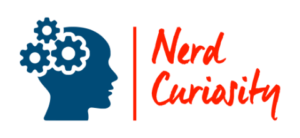Market research is the compass that guides product managers through the often-murky waters of product development and strategic planning. As the architects of a product’s success, product managers must stay informed about the market’s evolving demands and preferences. This voyage of discovery isn’t simply about numbers and data; it’s about understanding the pulse of potential customers and gauging the strength of your competition.

Product managers conduct market research by collecting, analyzing, and interpreting data related to customer behavior, market trends, and competitors. They employ a mix of surveys, interviews, user testing, and industry reports to gather insightful information that can shape a product’s features, positioning, and lifecycle.
As you read on, you’ll learn the nuts and bolts of effective market research methodologies, how insights are distilled from raw data, and the significant impact these strategies can have on guiding product decisions. You’ll also see how lean market research practices are becoming pivotal in rapidly changing markets, providing product managers with essential tools to navigate the complexities of their roles with agility and confidence.
Understanding Market Research in Product Management

To excel in product management, you must master the art of market research, which is pivotal in crafting strategies that resonate with your market and guide product development.
Importance of Market Research
Market research is the compass that steers your product vision toward success. Through the diligent gathering of data and analysis of market trends, you gain a robust understanding of opportunities that could be ripe for the taking. This process empowers you to make decisions backed by concrete insights, reducing the guesswork in every aspect of your role.
Roles of a Product Manager in Research
As a product manager, your involvement in research is multifaceted. At its core, you’re tasked with synthesizing data to form a holistic product strategy. You’ll often employ various tools to dissect complex information streams, ensuring your product aligns with the ever-evolving needs and desires highlighted by customer feedback and market trends. This is how you’ll guarantee that your product development efforts are focused on features that address genuine user problems.
Identifying and Analyzing the Target Audience

To effectively tailor your product strategy, you need to deeply understand who you’re creating for. Your research will uncover not just who your customers are, but also their behaviors and needs.
Creating User Personas
By crafting user personas, you build fictional yet data-driven profiles of your ideal customers. Start with basic demographic information like age, occupation, and location. Then delve into their goals, frustrations, and daily activities. This creates a vivid representation of the people whose problems you’re striving to solve.
For instance:
- Persona A: Tech-Savvy Tim
- Age: 30-35
- Occupation: Software Developer
- Location: Urban City
- Goals: Streamline daily tasks, stay ahead of tech trends
- Frustrations: Inefficient tools, lack of integration
- Daily Activities: Codes, attends team meetings, researches new tech
- Persona B: Manager Mary
- Age: 40-45
- Occupation: Marketing Manager
- Location: Suburban Area
- Goals: Increase team productivity, achieve quarterly KPIs
- Frustrations: Disjointed communication, underperforming campaigns
- Daily Activities: Manages campaigns, analyzes marketing data, coordinates with sales
Demographic and Psychographic Analysis
Digging into the demographics and psychographics of your target audience adds depth to your understanding. Demographics tell you who your customers are, while psychographics reveal why they make certain choices. You’ll examine factors like educational background, income level, and family size alongside values, hobbies, and behavior patterns.
For instance, the demographic analysis might reveal that your primary customer base is:
- Age: 25-34
- Income Level: $50,000 – $70,000
- Family Size: Single or young couples without children
Conversely, psychographic details could indicate that these customers:
- Value eco-friendly products and sustainable living
- Spend leisure time on outdoor activities
- Prefer online shopping for convenience
Combining both analyses, you will gain a comprehensive view of your customers. This allows you to anticipate their needs and craft solutions that resonate with their lifestyles.
Gathering and Utilizing Customer Feedback

To empower your products, you need to understand your users thoroughly. This begins with effectively gathering and parsing through customer feedback to drive strategic decisions.
Surveys and Interviews
Surveys are versatile tools for collecting customer feedback, allowing you to reach a broad audience quickly. With well-crafted questions, you can measure satisfaction, test product concepts, or validate market assumptions. Your survey should be concise, with scaled response options and open-ended questions for richer details.
Interviews, on the other hand, provide a deep dive into individual experiences. They are perfect for grasping the nuances behind user feedback. A semi-structured interview format ensures you cover essential topics while leaving room for unexpected insights.
Focus Groups and User Testing
Focus groups bring together a small, diverse group of users to discuss their experiences with your product. Moderated discussions can uncover shared pain points and generate new ideas. When setting up a focus group, ensure diversity in participants to gather a wide range of perspectives.
User testing is a hands-on approach where real users interact with your product under observation. This method shines by revealing practical issues with usability or design that may not emerge in self-reported feedback. In your sessions, track specific behaviors and ask participants for suggestions on improvements.
Conducting Competitive and Market Analysis

When you’re gearing up to position your product in the market, it is vital to dissect competitors and the ever-evolving market trends. This analysis provides a clear-eyed view of where your product stands and illuminates paths for strategic advancement.
Competitor Analysis
Understanding your competitors’ strengths and weaknesses is central to carving out your product’s niche. You’ll begin by listing out key features of similar offerings and evaluating how your product compares. Consider creating a SWOT analysis (Strengths, Weaknesses, Opportunities, Threats) for structured insight. An example of a thorough process can be seen through methodology implemented by Aha! which frames competitor analysis as a multifaceted approach to discovering your unique value proposition.
What to Focus On:
- Product Features: Delve into specific features that differentiate competing products from yours.
- Market Share: Assess how much of the market competitors control.
- Positioning: Understand how competitors present themselves to consumers.
Analyzing Market Trends and Positioning
Your market landscape is in constant flux, therefore staying abreast of trends is crucial. Track developments in technology, consumer preferences, and regulatory changes that may affect your industry. Tools and insights from experts, as outlined by Maven, can assist in staying current.
How to Approach This:
- Observe Trends: Record notable shifts that could impact product features or demand.
- Reflect on Positioning: Align your product’s benefits and messaging with current market sentiments.
Research Methodologies and Data Interpretation

When you, as a product manager, set out to undertake market research, choosing the proper methodology and effectively interpreting data are paramount to glean actionable insights.
Qualitative vs Quantitative Research
Your approach to market research can be twofold: qualitative and quantitative. Qualitative research involves collecting non-numerical data to understand concepts, opinions, or experiences. It can take the form of interviews or focus groups where you gather detailed insights from a smaller sample size. Methods like user testing sessions grant nuanced understanding of user behaviors.
In contrast, quantitative research relies on numerical data and can be extrapolated to the larger population. This type allows for statistical analysis, involving techniques like surveys with closed-ended questions or analyzing sales numbers. It’s how you predict trends or gauge market size. Leveraging both types offers you a full spectrum view of your market landscape.
Data Analysis Tools and Techniques
After collecting your data, the task ahead is analysis. For quantifiable insights, data visualization tools like charts or heat maps can help you spot patterns and correlate variables effectively. Whether it’s a bar graph or a complex scatter plot, presenting data visually aids comprehension and points to potential areas for action.
On the other side, analyzing qualitative data demands a thorough read to catch underlying themes or sentiments. Text analysis tools enable you to parse extensive feedback, saving time and highlighting prevalent opinions. Remember, combining tools with techniques like cross-tabulation in quantitative research can reveal deeper insights, helping you understand the ‘why’ behind the numbers.
Strategizing for Product Success

Imagine you’re at the helm of a product’s journey, responsible for steering it towards market triumph. Your blueprint for success involves meticulously sculpting your product roadmap and aligning your launch with the market’s pulse.
Developing Effective Product Roadmaps
Your product roadmap is the strategic communication tool that bridges your product vision with execution. It outlines the why and what behind your product and how it will evolve over time. To forge a powerful product roadmap:
- Define clear objectives: Establish what you aim to achieve in terms of revenue, customer satisfaction, and market position.
- Prioritize features: Balance customer needs with business priorities and ensure alignment with the overall product strategy.
- Continuously iterate: Based on feedback and market trends, revise your roadmap to keep pace with your evolving product vision.
Assessing Product-Market Fit and Launch Strategies
Product-market fit is the lodestar guiding your product launch—it confirms that your product satisfies a strong market demand. To evaluate your fit:
- Analyze customer feedback: Gather insights on user experience and needs to tailor your product appropriately.
- Study the pricing landscape: Determine a pricing strategy that reflects the value of your product while considering competitive pricing and perceived customer value.
Conclusion

By now, you’ve grasped the essentials of market research. You’ve learned to tune into your audience, and you understand the value of studying your competition. Remember, your actions are guided by the data, trends, and insights you uncover. It shapes your strategy, informs your decision-making, and illuminates the path toward product success.
You know to use a blend of qualitative and quantitative methods. While numbers paint a broad picture, individual stories lend depth to your understanding. Listen, analyze, and iterate your product based on both metrics and anecdotes. This duality ensures a well-rounded approach to market research.
Remember to leverage tools and techniques like surveys and interviews, and always keep an eye on market trends. As a product manager, it’s your role to bridge the gap between customer need and product offering. To do that effectively, your market research must be thorough and ongoing.
Your final takeaways should be clarity and foresight. Market research isn’t a one-off task—it’s an integral strand in the fabric of product management. Armed with knowledge and insights, you’re well on your way to guiding your product through the complexities of the market. Embrace this journey with confidence, knowing you have the tools you need to excel.
